Advertisements
Advertisements
Question
In the given figure, MP is the bisector of ∠P and RN is the bisector of ∠R of parallelogram PQRS. Prove that PMRN is a parallelogram.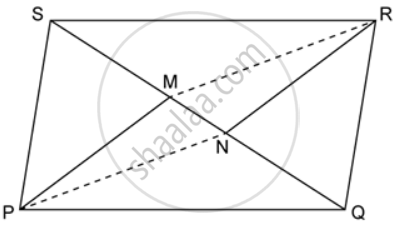
Solution
Construction: Join PR.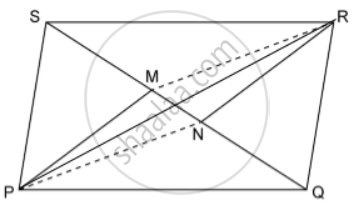
Proof:
∠QPM = `(1)/(2)∠"P"` ....(AP is the bisector of ∠P)
∠SRN = `(1)/(2)∠"R"` ....(RN is the bisector of ∠R)
⇒ ∠QPM = ∠SRN (i)....[∠P =∠R (Opposite angles of a parallelogram)]
Now, ∠QPR = ∠SRN (ii)....[Alternate angles since PQ || SR)
Subtracting (ii) from (i), we get
∠QPM - ∠QPR = ∠SRN - ∠SRP
⇒ ∠RPM =∠PRN
⇒ PM || RN ...(Alternate angles are equal)
Similarly, RM || PN
Hence, PMPN is a parallelogram.
APPEARS IN
RELATED QUESTIONS
In the alongside diagram, ABCD is a parallelogram in which AP bisects angle A and BQ bisects angle B.

Prove that:
- AQ = BP
- PQ = CD
- ABPQ is a parallelogram.
Prove that the bisectors of opposite angles of a parallelogram are parallel.
The following figure shows a trapezium ABCD in which AB is parallel to DC and AD = BC. 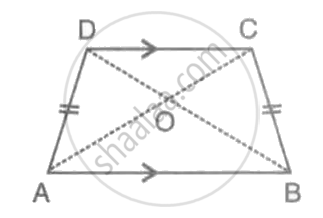
Prove that:
(i) ∠DAB = ∠CBA
(ii) ∠ADC = ∠BCD
(iii) AC = BD
(iv) OA = OB and OC = OD.
PQRS is a parallelogram. T is the mid-point of PQ and ST bisects ∠PSR.
Prove that: RT bisects angle R
PQRS is a parallelogram. T is the mid-point of PQ and ST bisects ∠PSR.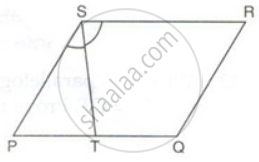
Prove that: ∠RTS = 90°
In a parallelogram ABCD, E is the midpoint of AB and DE bisects angle D. Prove that:CE is the bisector of angle C and angle DEC is a right angle
In the given figure, the perimeter of parallelogram PQRS is 42 cm. Find the lengths of PQ and PS.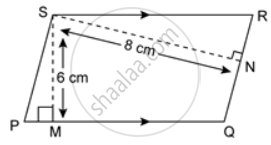
Find the perimeter of the parallelogram PQRS.

In the Figure, ABCD is a rectangle and EFGH is a parallelogram. Using the measurements given in the figure, what is the length d of the segment that is perpendicular to `bar("HE")` and `bar("FG")`?
In parallelogram ABCD of the accompanying diagram, line DP is drawn bisecting BC at N and meeting AB (extended) at P. From vertex C, line CQ is drawn bisecting side AD at M and meeting AB (extended) at Q. Lines DP and CQ meet at O. Show that the area of triangle QPO is `9/8` of the area of the parallelogram ABCD
